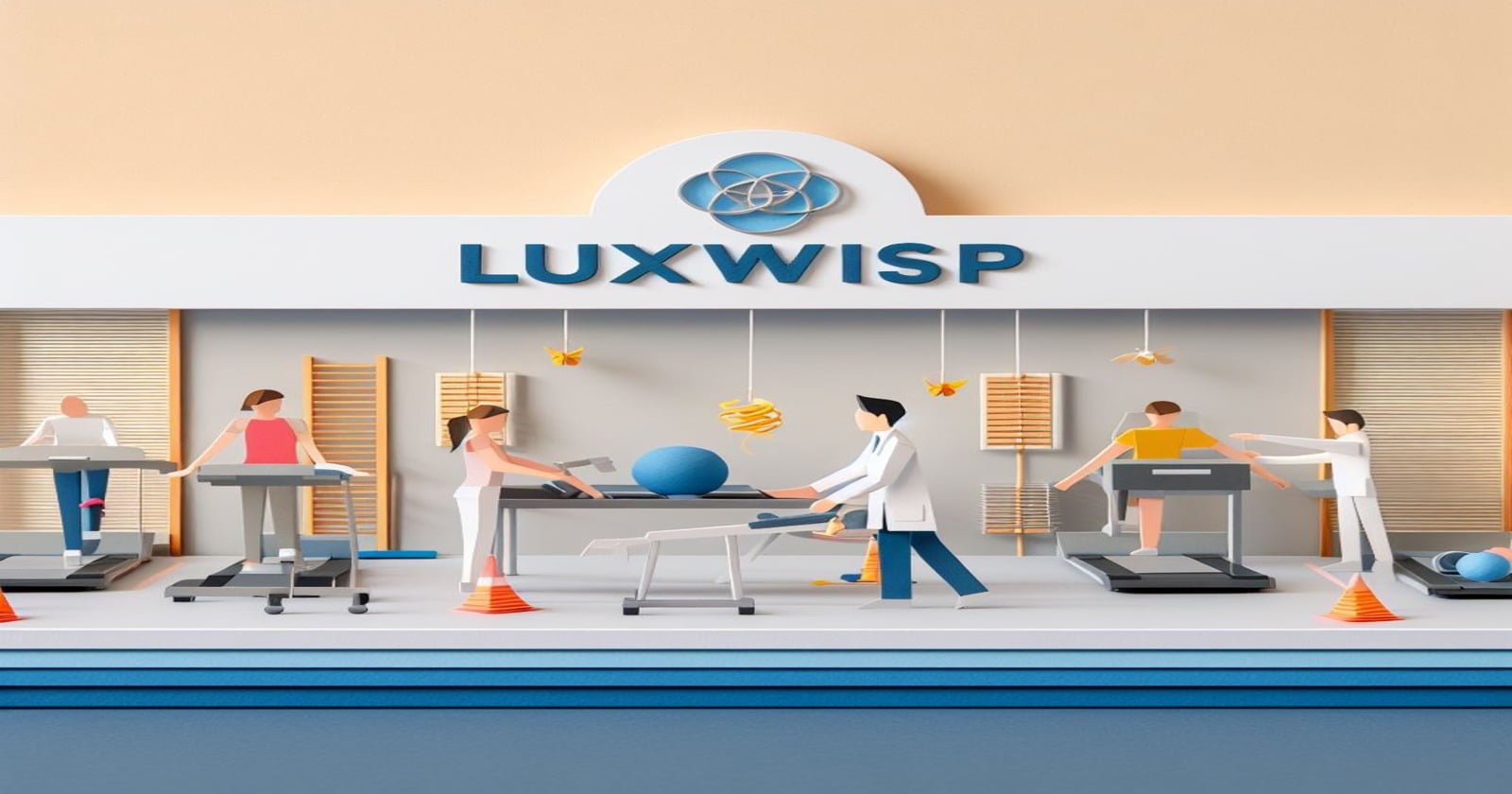The pros of the CINAHL database are its comprehensive coverage of nursing and allied health literature, direct full-text links, and superior search results for specialized topics, ensuring thorough research resources. Another advantage is its facilitation of locating studies on subjects with various synonyms, aiding in exhaustive literature reviews in nursing and occupational therapy.
The cons of CINAHL include its limitation to single-database searches at a time, restricting the scope of research across broader disciplines. Despite its extensive nursing literature coverage, CINAHL’s subscription-based access may limit availability to certain users, hindering universal research advancements.
Takeaways:
- CINAHL offers access to over 3,000 high-quality, peer-reviewed nursing and allied health journals.
- Regular weekly updates ensure access to the most current research and literature.
- Subscription costs can be a barrier for individual researchers and smaller institutions.
- Unique content in CINAHL significantly contributes to the comprehensiveness of systematic reviews.
| Pros of CINAHL Database | Cons of CINAHL Database |
|---|---|
| User-friendly interface | Single database search |
| High-quality results | Limited availability |
| Direct full-text links | Complex search terms |
| Finds synonyms | Difficulty retrieving specific info |
| Nursing & allied health focus | Subscription cost barrier |
| Covers qualitative studies | Learning curve for new users |
| Occupational therapy coverage | Limited non-English resources |
| Comprehensive indexing | Over-reliance on specific disciplines |
| Diverse materials included | Update frequency |
| Specialized for healthcare | Filtering challenges |
Pros of Cinahl Database
- Accessibility: CINAHL is highly regarded for its user-friendly interface and accessibility. This makes it easier for healthcare professionals and researchers to navigate and utilize the database effectively for their research needs. The ease of access enhances the research experience, making it less time-consuming to find relevant information.
- Search results: When conducting subject searches, CINAHL often yields more and higher quality results compared to other databases such as Primo Search. This is particularly beneficial for researchers looking for comprehensive data on specific topics within the nursing and allied health fields, ensuring they have access to a wide array of relevant articles.
- Full-text links: CINAHL stands out for its prominent and direct links to full-text articles. This feature significantly facilitates the research process, allowing users to quickly access the complete articles without navigating through multiple pages or websites, thus saving time and effort.
- Subjects with synonyms: The database excels in finding articles on subjects that have multiple synonyms. This is particularly useful in medical and health sciences where terminology can vary widely, ensuring that researchers can find relevant literature regardless of the terminology used.
- Nursing and allied health focus: CINAHL specifically targets nursing and allied health disciplines, indexing top literature including journals and publications from key organizations such as the National League for Nursing and the American Nurses Association. This specialized focus ensures that professionals in these fields have access to the most relevant and up-to-date information.
- Qualitative studies: For reviews of qualitative studies in nursing, CINAHL is an indispensable resource. Its coverage includes a wide range of qualitative research, providing rich insights and case studies that are crucial for in-depth understanding of various topics within the nursing field.
- Occupational therapy coverage: CINAHL indexes approximately 13 occupational therapy-related journals that are not covered by MEDLINE. This makes it an essential tool for researchers and practitioners within the occupational therapy field, ensuring they have access to specialized resources.
- Comprehensive indexing: The database’s comprehensive indexing system allows for efficient searching across multiple health science disciplines. This thorough indexing ensures that users can find relevant literature on a wide range of topics, enhancing the breadth of research.
- Inclusion of diverse materials: Besides journal articles, CINAHL also includes books, book chapters, dissertations, and computer programs. This diversity of sources ensures that users have access to a wide range of materials for comprehensive research.
- Specialized for healthcare research: CINAHL’s focus on nursing and allied health literature makes it a specialized tool for healthcare research. This specialization ensures that users have access to targeted information that is highly relevant to their specific research needs within the healthcare sector.
Cons of Cinahl Database
- Single database search: CINAHL’s limitation to searching one database at a time can be a drawback for researchers who wish to conduct more comprehensive searches across multiple databases simultaneously. This may necessitate additional time and effort to conduct thorough research.
- Limited availability: Due to subscription costs, CINAHL’s availability is limited to certain institutions. This restricts access for some researchers, potentially hindering their ability to conduct comprehensive literature reviews or access specific articles needed for their work.
- Complex search terms: The complexity of CINAHL’s indexing system, while comprehensive, can pose challenges. Researchers may find it difficult to navigate the system or to use the correct search terms to retrieve relevant information, potentially limiting the efficiency of their research process.
- Difficulty retrieving specific information: The database can sometimes present limitations in retrieving specific types of information. This could be due to the vast amount of data available, making it challenging to filter through results to find highly specific articles or data.
- Subscription cost barrier: The cost of subscribing to CINAHL can be prohibitive for smaller institutions or independent researchers. This financial barrier can limit access to valuable resources, impacting the quality and scope of research conducted outside of well-funded institutions.
- Learning curve for new users: New users may find CINAHL’s comprehensive features and advanced search options overwhelming. This learning curve can initially hinder the effectiveness of research until users become more familiar with the system.
- Limited non-English resources: CINAHL’s focus on English-language literature may limit access to valuable research published in other languages. This can be a significant drawback for global research efforts or for studies that require a broader perspective that includes non-English sources.
- Over-reliance on specific disciplines: While CINAHL’s focus on nursing and allied health is a strength, it can also be a limitation for interdisciplinary research that requires broader coverage outside these fields. Researchers may need to consult additional databases to obtain a comprehensive view.
- Update frequency: The frequency of updates to CINAHL can affect the timeliness of the information available. If updates are not frequent enough, users may miss out on the latest research findings, impacting the relevance of their work.
- Filtering challenges: Although CINAHL provides various filtering options to narrow down search results, users may still face challenges in effectively filtering large volumes of search results. This can make it time-consuming to identify the most relevant articles among a vast array of search outcomes.
Comprehensive Coverage
The CINAHL database, with its coverage of over 3,000 journals in nursing and allied health fields, stands as a comprehensive resource for professionals and researchers seeking high-quality information. This extensive collection includes journals from prestigious organizations such as the National League for Nursing and the American Nurses Association, which are known for their impactful contributions to the healthcare industry. The inclusion of 1,446 active global Open Access journals further enhances CINAHL’s coverage, making a wide range of diverse research readily accessible to its users.
CINAHL’s rigorous curation and indexing practices ensure that the database remains a reliable source for finding a broad spectrum of high-quality resources. This meticulous approach to content selection guarantees that users can access the most relevant and current information available in their field. Additionally, CINAHL Subject Headings offer a tailored search experience, enabling precise search results and efficient information retrieval. This feature is particularly beneficial in the complex and multifaceted domains of nursing and allied health, where finding specific research can be challenging. Overall, CINAHL’s comprehensive coverage and sophisticated search tools make it an indispensable resource for healthcare professionals and researchers.
Quality of Sources

Evaluating the quality of sources within the CINAHL database is crucial for ensuring the reliability and validity of research.
The implementation of peer-reviewed standards, combined with a diverse range of source material and consistent updates, contributes significantly to the credibility of information retrieved from this platform.
These factors collectively enhance the research experience by providing users with access to high-quality, current information.
Peer-Reviewed Standards
Cinahl Database’s commitment to peer-reviewed standards is evident in its rigorous curation of top nursing and allied health literature, ensuring users access high-quality sources. By indexing journals from esteemed organizations like the National League for Nursing and the American Nurses Association, Cinahl stands as a beacon of reliability in academic research.
The inclusion of 1,446 active global open access (OA) journals further demonstrates this, offering a broad spectrum of peer-reviewed articles. Additionally, the database’s utilization of CINAHL Subject Headings and searchable cited references in 1,312 journals enhances the research process, ensuring precise and credible information retrieval.
EBSCO’s Enhanced Subject Precision (ESP) mapping, executed by subject matter experts, upholds the integrity of the database’s indexing, solidifying its role in promoting scholarly communication.
Source Diversity
A myriad of reputable sources, including top nursing and allied health literature from esteemed organizations, constitutes the foundation of CINAHL’s diverse and quality source offerings. The database’s commitment to source diversity is evident through:
- Indexing literature from reputable sources such as the National League for Nursing and the American Nurses Association.
- Curating and indexing 1,446 active global open access (OA) journals through CINAHL Ultimate.
- Enhancing source diversity with a growing collection of high-quality, peer-reviewed OA journals.
- Offering 1,312 journals with searchable cited references, enabling quality subject indexing from a wide array of reputable sources.
CINAHL’s approach to source diversity ensures users have access to a wide range of high-quality, peer-reviewed literature, supporting comprehensive research and informed practice in nursing and allied health fields.
Update Frequency
The weekly updates of the CINAHL database ensure the provision of the most current and relevant nursing and allied health literature to its users. This consistent refreshment cycle not only maintains the database’s relevance but also guarantees that the latest scholarly publications are readily available.
With over 1,300 journals indexed, CINAHL offers a vast array of searchable cited references, enhancing the quality of research sources accessible. These frequent updates significantly contribute to the high-quality and up-to-date sources available for research in nursing and allied health fields.
Moreover, the access to recent publications through regular updates enhances the reliability and currency of information, making CINAHL a trusted resource for professionals and scholars in these disciplines.
Search Functionality

Exploring the vast resources of medical literature, users find that CINAHL’s advanced search functionality significantly enhances the efficiency and precision of their research endeavors. The database stands out for its comprehensive features designed to streamline the search process, making it a valuable tool for healthcare professionals and researchers alike.
Here are key aspects of CINAHL’s search functionality:
- Use of MeSH Terms: CINAHL allows for the use of Medical Subject Headings (MeSH) terms, enabling users to perform highly precise searches. This feature is crucial for retrieving relevant literature in a vast database.
- Search Filters and Limiters: The platform offers a variety of filters and limiters, allowing users to refine their search results based on specific criteria such as publication date, article type, and subject matter.
- Direct Access to Full-Text Articles: Users can access full-text articles directly from their search results, which significantly enhances the convenience and efficiency of conducting research.
- Management of Search History and Results: CINAHL provides functionalities for managing search history and results, aiding in the organization and tracking of research findings. This feature ensures that users can easily revisit their searches and streamline their research process.
Cost Considerations

Assessing the financial implications of accessing the CINAHL database is crucial for both institutions and individual users.
The subscription pricing model, coupled with institutional access fees, may present barriers to unrestricted use, especially post-graduation.
Furthermore, the costs borne by individual users necessitate a careful evaluation of the database’s value in relation to one’s specific research needs.
Subscription Pricing Model
Regarding the subscription pricing model of CINAHL, costs vary significantly depending on the subscriber’s status as an individual or institutional user, directly impacting accessibility. To better understand this model, consider the following points:
- Subscription Type: CINAHL operates on a subscription-based model, necessitating payment for access.
- Institutional Discounts: Academic institutions often benefit from discounted rates, making it more accessible for students and faculty.
- Individual Costs: Independent researchers or clinicians may find individual subscriptions costly, which could limit their access.
- Bundled Access: Some institutions offer CINAHL as part of a bundle with other databases, providing a more cost-effective solution for subscribers.
When evaluating the subscription pricing model of CINAHL, it’s crucial to weigh cost considerations against the database’s value and relevance to one’s research needs.
Institutional Access Fees
Institutional access fees for the CINAHL database can significantly vary, reflecting differences in subscription packages and institutional size. These costs may be part of broader library or institutional subscription fees, impacting overall budget allocations.
Negotiations with CINAHL providers allow some institutions to tailor pricing according to their specific needs, such as the number of users or additional services required. However, for smaller institutions or those with limited budgets, the access fees can pose a substantial financial challenge.
The decision to invest in CINAHL access necessitates a careful evaluation of its value and relevance to the institution’s research needs, balancing the benefits of comprehensive nursing and allied health literature against the financial implications of subscription fees.
Individual User Costs
While institutional access fees present a significant consideration, individual user costs for CINAHL also merit close examination due to their varying impact based on subscription packages and affiliations.
- Subscription Packages: The cost for individuals subscribing to CINAHL can vary, making it essential to choose a package that aligns with one’s research needs and budget.
- Institutional Affiliations: Many institutions offer free access to their students and faculty, significantly reducing or eliminating individual costs.
- Comprehensive Resources: Despite the potential high cost, an individual subscription provides access to a wealth of resources invaluable for nursing and allied health literature.
- Cost-effectiveness: Users should assess the value of CINAHL in relation to their specific research needs and the availability of alternative databases or group subscription options to mitigate costs.
Accessibility and Usability

Recognized globally by healthcare professionals and researchers, CINAHL stands out for its exceptional accessibility and user-friendly interface, facilitating efficient and comprehensive literature searches in nursing and allied health fields. This database is highly regarded for its ease of access, making it a preferred choice for users worldwide, especially when compared to more region-specific databases. The platform’s design and functionality significantly enhance the usability for researchers and information professionals, enabling them to conduct thorough searches with minimal effort.
The accessibility of over 3,000 journals within CINAHL underscores its value as a comprehensive resource for literature searches. Such extensive coverage ensures that users can access a wide array of nursing and allied health literature, making it an indispensable tool for those in the healthcare sector. The ease of navigation and the user-oriented design of CINAHL contribute to its status as a premier database for those seeking to conduct in-depth research in nursing and allied health fields. Its global accessibility and user-friendly interface not only cater to the needs of healthcare professionals and researchers but also promote an efficient and effective research process.
Unique Content Availability

One of the distinguishing features of the CINAHL database is its ability to offer unique content that is not readily available in other databases, a critical aspect for comprehensive systematic reviews in nursing and allied health research. This characteristic is particularly important for researchers seeking to compile an exhaustive collection of studies on specific topics within these fields. The unique content availability in CINAHL can significantly impact the quality and comprehensiveness of systematic reviews.
Here are key points highlighting the unique content availability in CINAHL:
- High Percentage of Unique Studies: 41.9% of reviews included at least one study exclusively found in CINAHL, underscoring its importance in accessing distinctive research.
- Substantial Coverage: Studies show that 20.9% of systematic reviews had all studies available in CINAHL, while 48.8% had over 80% of studies accessible.
- Median Percentage of Unique Content: Across reviews, CINAHL had a median of 9.09% unique studies, with a range from 3.3% to 33.0%, highlighting its role in providing exclusive research materials.
- Complement to Other Databases: Despite most unique studies being found in databases like Embase and SCI, CINAHL’s unique contributions enhance the comprehensiveness of systematic reviews.
Utilizing CINAHL for research enriches the review process by providing access to unique studies, contributing significantly to the fields of nursing and allied health research.
Update Frequency

Beyond the unique content availability, the CINAHL database ensures its utility through a rigorous update frequency, with new literature added weekly. This consistent refresh allows healthcare professionals, researchers, and students immediate access to the most current nursing and allied health literature. By maintaining a pulse on the latest developments within the nursing field, CINAHL supports the ever-evolving landscape of healthcare information.
The importance of these regular updates cannot be overstated. They enable researchers to stay at the forefront of knowledge, ensuring that their work is informed by the most recent research findings and evidence-based practices. This access to up-to-date information is crucial for advancing patient care and for the development of new methodologies in the nursing practice.
Moreover, the reliability and relevance of the CINAHL database are significantly enhanced by its update frequency. Users can trust the information they retrieve to be current and reflective of the latest standards and practices in healthcare. This commitment to providing timely information bolsters evidence-based decision-making, a cornerstone of effective nursing practice. In this way, CINAHL’s frequent updates contribute substantially to the quality and efficacy of healthcare education and practice worldwide.
Conclusion
In conclusion, the CINAHL database offers comprehensive coverage and access to high-quality sources tailored for nursing and allied health professionals. Its advanced search functionality enhances research efficiency, while the availability of unique content ensures a broad spectrum of information.
However, considerations around subscription costs and post-graduation access limitations must be acknowledged. Regular updates maintain its relevance in the field. Despite its few drawbacks, CINAHL stands as a critical resource for those within the nursing and allied health disciplines.










